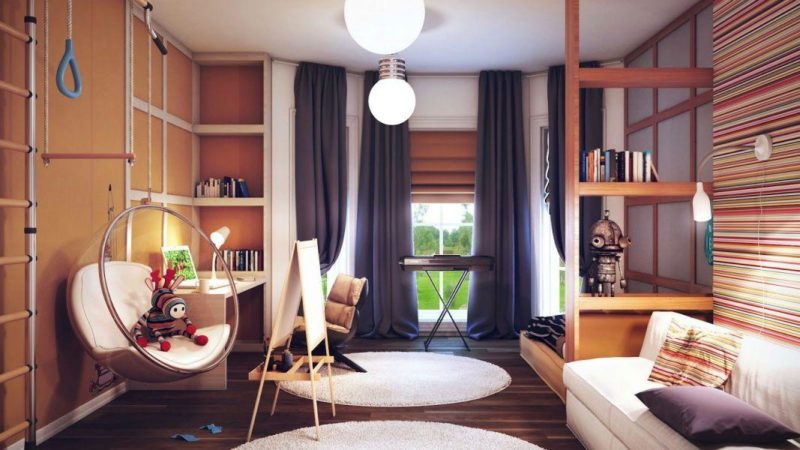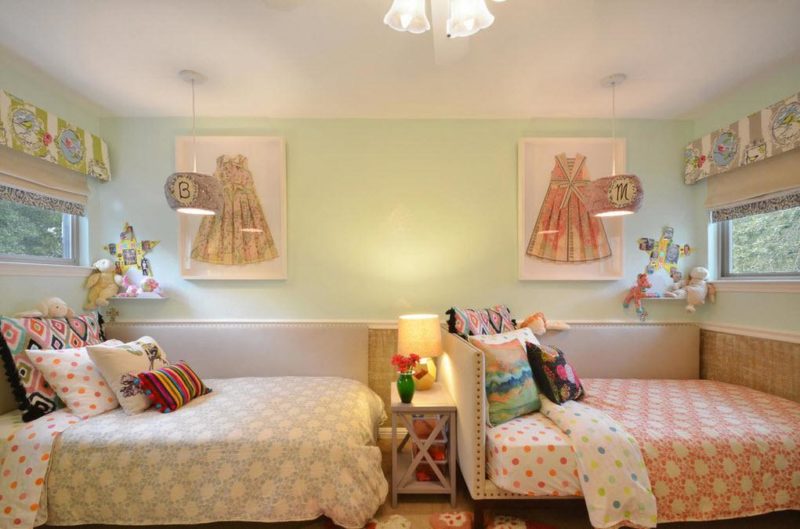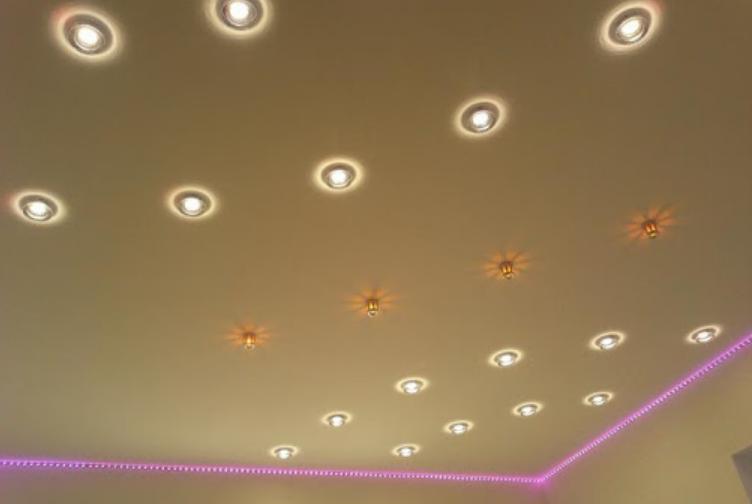How to make the right lighting for a child's room
Make competent lighting in the children's room - the paramount task in the planning of the "nest" for the baby. For the child to fall asleep peacefully, play happily, and do his homework thoughtfully, you need the right lighting for the whole room and its individual zones. This article will tell you about the basic principles of organizing lighting in the nursery, ways of zoning and local lighting, and interesting solutions.
Requirements for lighting a child's room
To think about the organization of lighting in the children's room should be at the stage of selecting the room for it in the apartment. A simple rule: as a child's room, it is better to choose the brightest room where there is enough natural light. For a child, it is extremely important. It is good if the windows face south or east.
There is no standard on the number of lamps in the nursery and their exact location. The choice is made on several parameters:
- How old the child is;
- the size of the room;
- what materials were used for decoration;
- the number of windows, and their sizes;
- whether the windows face the sunny side.
There are also a number of basic principles that should be adhered to in the planning phase:
- For proper lighting of the nursery, one light is definitely not enough. In addition to the main light, it is necessary to accentuate individual local areas.
- The material from which the lamp is made - the most important point. It directly affects the health of the baby. The lamp should not overheat.
- Design, too, can not be neglected. Fixtures should look organically in the interior, do not look flashy, do not cause negative emotions in the inhabitants of the nursery.
How to properly distribute light
Regardless of the style in which the nursery is decorated, the role of the main light should be performed by a chandelier with at least 3 plafonds.
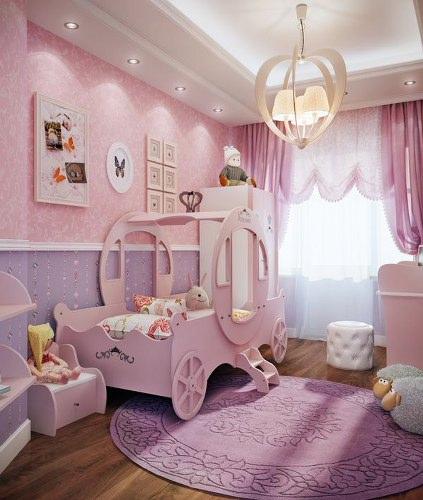
If the ceilings are low and the child is active and bouncing, you should either buy a chandelier with plastic spots or opt for recessed ceiling spot models. Crystal or openwork glass are dangerous materials when you consider the possibility of a ball or a hard toy hitting it.
No less importance than the main light is given to two other categories of lighting - lateral and local. In particular, this applies to a room of large size. Directly above the bed should be hung a single lamp with a frosted plafond. It would be a good idea to have A sconceIt's a good idea to have a sconce: it's good for reading, and it'll also help to fall asleep.
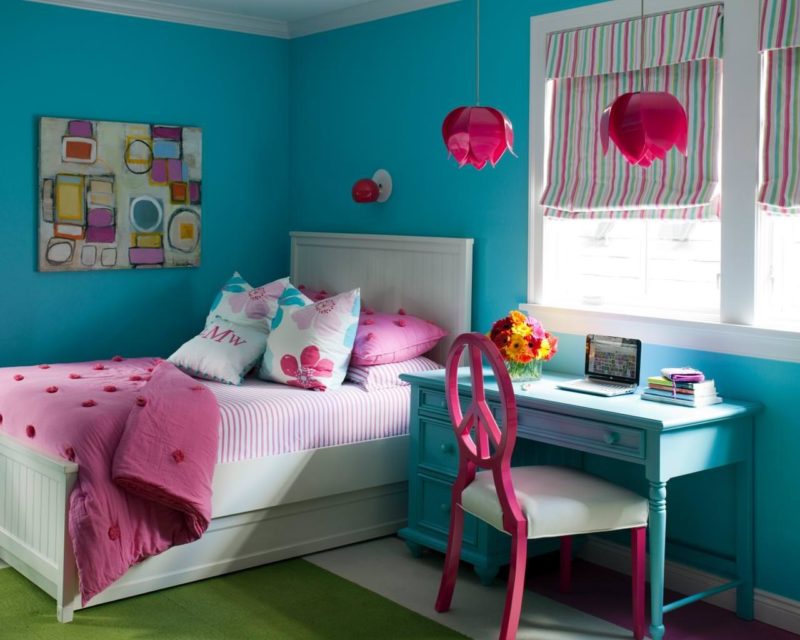
The organization of artificial lighting in the nursery
Local illumination
Now about local lighting of individual areas and multi-level zoning. Almost always in the nursery there is a table. The schoolboy does his homework on it, and the "Kinder" of preschool age spends time with coloring books and toys. This area should be illuminated with a tabletop floor lamp or lamp, which clings to the table. The light should be soft and warm. It is not necessary to use lamps more powerful than 60 watts.
Important. The higher the light source is, the better it is for your child's eyes. So the light will spread evenly over the whole area.
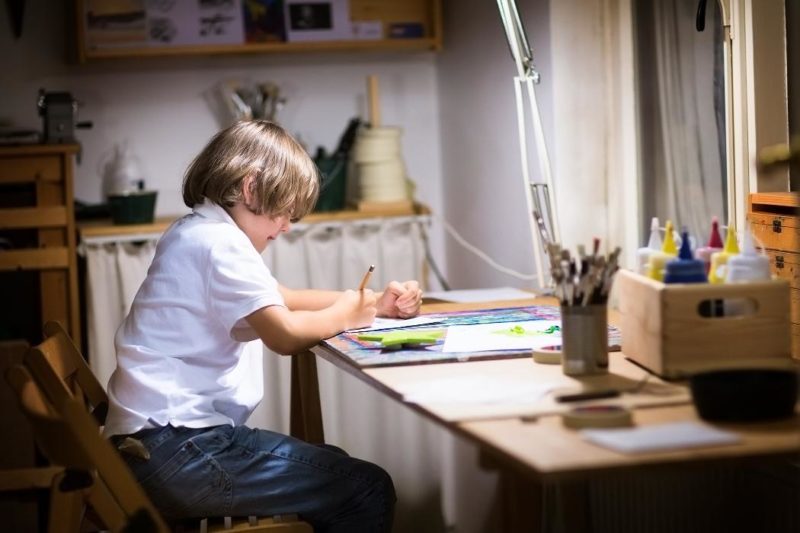
Today, even a preschooler can have a computer on his desk. The light from the lamp should not create glare from the monitor. For correct placement it is necessary to take into account the angle of incidence of light and the height of the child's eyes when he looks at the screen. The "working" hand also plays a role. For a child with a left-handed child is advised to put a desk light on the right, for right-handed - on the left.
Idea. If there is an overhanging shelf directly above the table, a light can be built into its lower base - this will give even more light.
It is equally important to put a small night light next to the bed, ideally with adjustable brightness. So the baby will fall asleep peacefully, and adults - walk around without the threat of bumping into the furniture in the dark. Usually, floor lamps for the nursery are made in the form of fairy tale characters or animals to please the kids.
Useful to read: Design furniture for children's rooms
Multi-level zoning
In general, different ways are used to divide the children's room into separate zones. The auxiliary elements are:
- Stationary partitions made of plasterboard or wood. Allow you to divide the room into several parts.
- Screen walls. This is a good solution for a room where two children live.
- Furniture. A bookcase, shelving unit and other pieces of furniture can serve as a good divider of the nursery into separate zones. The main thing is that they should not be very high, otherwise it will create difficulties with daylighting.
If the room has high ceilings, there is a reason to install a bunk space. Children are very fond of improvised lofts, and the high suspended ceiling just makes it possible to do this.
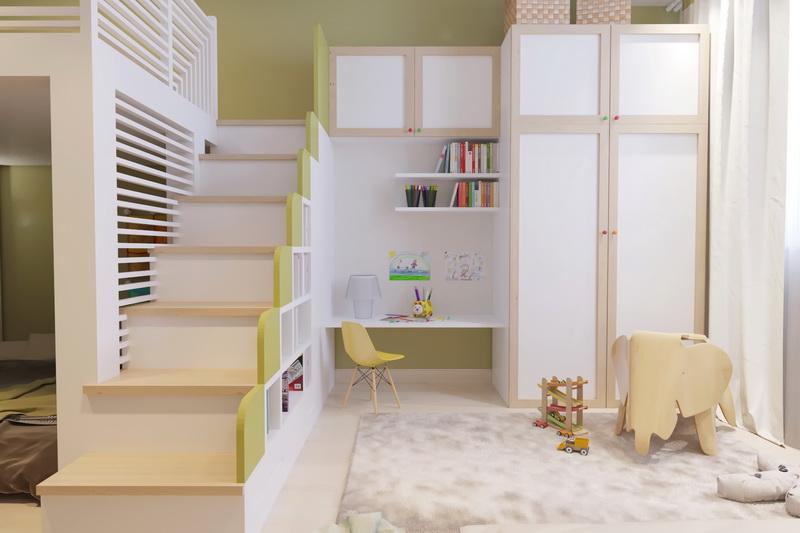
In order for the child to confidently descend and ascend to its hiding place, the stairs should be well lit. On the second tier, the light should be minimalistic and unobtrusive.
Equally effective would be sections of the floor raised a few levels higher. This is usually done in the form of a small podium. With the help of built-in lighting, such zones can be saturated with light of any nature - from calm to fairy-tale.
For different levels of the floor, it is better to use different materials.
The main thing in the multi-level zoning is a competent balance. You should not make a heap of everything, you need to clearly understand what and why to do.
The video talks about the main trends in lighting the nursery.
The advantages of a tensioned design
If possible, in the children's room from the very beginning it is better to install a stretch or suspended ceiling. In addition to options with the creation of a second tier, stretch ceilings provide a number of other advantages. Light fixtures will be built into the ceiling space, and they won't be hit by a flying ball. In addition, all the wiring will be securely hidden.
Any color of suspended surface can enhance the visual effect of zoning. The different types of luminaires. In this way you can achieve a real extravaganza of colors.
A suspended ceiling with a glossy surface "kills another hare". The sunlight reflected in the gloss, more saturates the room with natural light, reaches the farthest corners. And the artificial lighting from the gloss will only benefit.
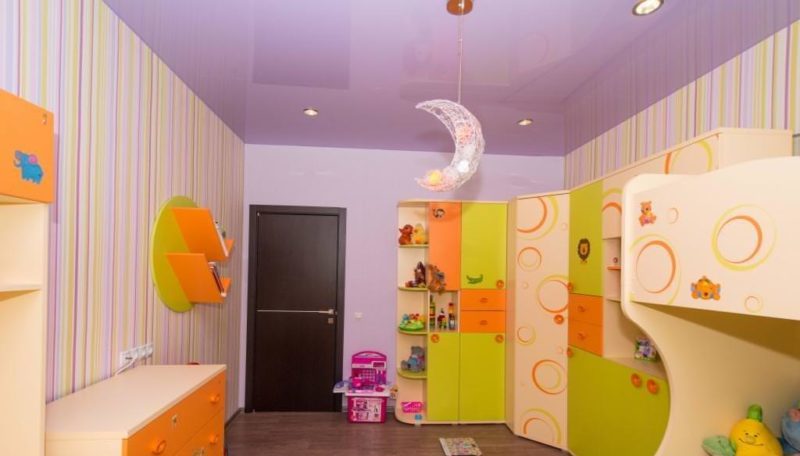
Requirements for lamps and light for the children's room
It is best to choose LED lamps. This type of less damage to the child's eyes than others, does not create as much emotional stress as, for example, incandescent lamps. In addition, LED lights consume less energy, live a long time, they just can't be broken.
The optimal light for basic and local lighting in a child's room is neutral white. It does not hurt the eyes, softens the perception. But for floor lamps, you need a warm yellow light. Nothing will help to sleep better.
Important. The power of all light in the room should be directly proportional to the age of the child. The older he is, the more power should be set. The main thing is not to go overboard.
Examples of lighting in the nursery for a boy and a girl
The children's room, which is inhabited by a boy, will be different from a similar room for a little lady. First of all, this is expressed in the main shades (gray, blue, purple, brown), then in the girl's room the bright ones prevail:
- yellow;
- orange;
- pink;
- red;
- lettuce.
Light in the nursery should competently emphasize the advantages of the overall color palette, but not conflict with it. If two children of different sexes live in the same nursery, it is worth zoning out for each of them. Roughly speaking, in one room you need to fit the design of two.
The main rule - between the areas for a boy and a girl should be something common, unifying. For example, the same models of chairs or cabinets. Let them be painted in different colors, but the external similarity and will be the same thing in common.
The basic principles of the arrangement of lighting fixtures are the same. The main lighting - a chandelier or lanterns built into the ceiling. The table and the play place should be accented with table lamps and local lighting. A floor lamp should be placed next to the bed.
These photos show options for lighting design for two types of children's rooms:
